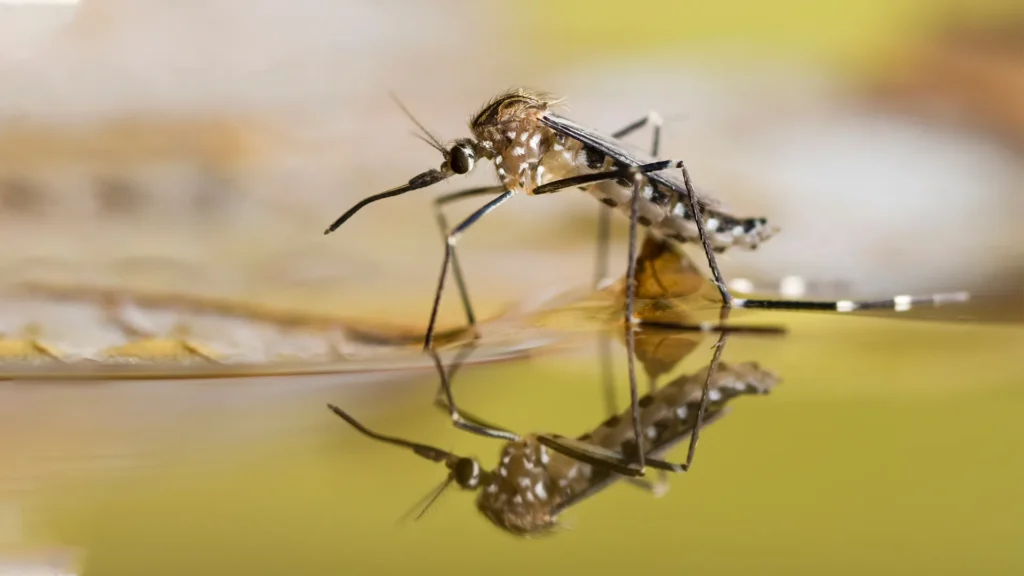
Mosquitoes are more than just a nuisance; they can carry dangerous diseases like West Nile Virus, Zika Virus, and Dengue fever. As a homeowner, taking proactive measures to reduce mosquito populations around your property is essential for protecting your family’s health. Here’s a comprehensive 10-step mosquito prevention checklist to help keep your home and yard mosquito-free.
1. Eliminate Standing Water
Mosquitoes breed in stagnant water, making it crucial to eliminate any sources of standing water around your property. Check for water accumulation in bird baths, flower pots, gutters, tarps, and children’s toys. Even a small amount of water can become a breeding ground for mosquitoes. Regularly empty and clean these items to prevent mosquito larvae from developing.
2. Maintain Your Gutters
Clogged gutters can hold water and become a perfect breeding site for mosquitoes. Clean your gutters regularly, especially after heavy rain, to ensure water flows freely. Installing gutter guards can also help reduce debris buildup, making it easier to keep gutters clean.
3. Inspect and Repair Screens
Windows and doors should have intact screens to prevent mosquitoes from entering your home. Regularly inspect all screens for holes, tears, or gaps and repair them promptly. Consider installing screens with a finer mesh to keep out even the smallest mosquitoes.
4. Use Mosquito Repellents
Applying mosquito repellent when spending time outdoors can significantly reduce your risk of bites. Look for repellents containing DEET, picaridin, or oil of lemon eucalyptus, as these are proven to be effective. Always follow the manufacturer’s instructions when applying repellent, especially on children.
5. Install Outdoor Fans
Mosquitoes are weak fliers and tend to avoid areas with strong air currents. Installing outdoor fans on patios or decks can help keep mosquitoes at bay while you enjoy time outside. Ceiling fans or portable fans can create enough airflow to make it difficult for mosquitoes to land.
6. Use Mosquito-Repelling Plants
Certain plants are known to repel mosquitoes due to their strong scent. Consider adding plants like citronella, lavender, marigolds, basil, and peppermint to your garden or outdoor seating areas. While these plants alone won’t eliminate mosquitoes, they can complement other mosquito prevention efforts.
7. Keep Grass and Shrubs Trimmed
Mosquitoes often rest in tall grass, shrubs, and overgrown vegetation during the heat of the day. Regularly mowing your lawn and trimming back bushes and shrubs can reduce the number of resting places for mosquitoes. Removing yard debris, such as piles of leaves or grass clippings, also helps minimize mosquito hiding spots.
8. Treat Your Yard
Consider using a mosquito treatment in your yard, especially during peak mosquito season. There are various options, including natural and chemical treatments. Natural options, such as garlic sprays or essential oil blends, can be applied to plants and grassy areas. Chemical treatments, such as insecticides containing permethrin or bifenthrin, can be effective but should be used with caution to avoid harming beneficial insects.
9. Install Mosquito Traps
Mosquito traps are an effective way to reduce the mosquito population around your home. These devices attract mosquitoes using light, heat, or carbon dioxide and then trap or kill them. Place traps in areas where mosquitoes are most active, such as near standing water or dense vegetation. While traps won’t eliminate all mosquitoes, they can help reduce their numbers.
10. Schedule Regular Inspections
If you’re serious about mosquito prevention, consider scheduling regular inspections with a pest control professional. They can identify potential breeding sites, apply treatments, and offer additional advice on how to keep your home mosquito-free. Regular inspections are especially important if you live in an area with a high mosquito population or near bodies of water.
Additional Tips for Effective Mosquito Prevention
- Cover Water Storage Containers: If you must store water outdoors, such as in rain barrels, ensure they are tightly covered with a lid or mesh that keeps mosquitoes out.
- Check for Leaks: Repair any outdoor faucets, pipes, or air conditioning units that may be leaking water, as these can create small pools where mosquitoes can breed.
- Use Insect-Repellent Clothing: When spending extended periods outdoors, consider wearing long sleeves, pants, and socks treated with permethrin, a repellent that can be applied to clothing.
- Encourage Community Efforts: Mosquito prevention is most effective when the whole neighborhood is involved. Share tips with neighbors and encourage community efforts to reduce mosquito breeding sites.
Approach Mosquito Problems Proactively
Preventing mosquitoes from invading your home and yard requires a combination of strategies, but the results are worth the effort. By following this 10-step mosquito prevention checklist, you can significantly reduce the mosquito population around your property, making it safer and more enjoyable for you and your family to spend time outdoors. Remember, consistency is key—regularly checking and maintaining your property will help keep mosquitoes at bay all season long.

